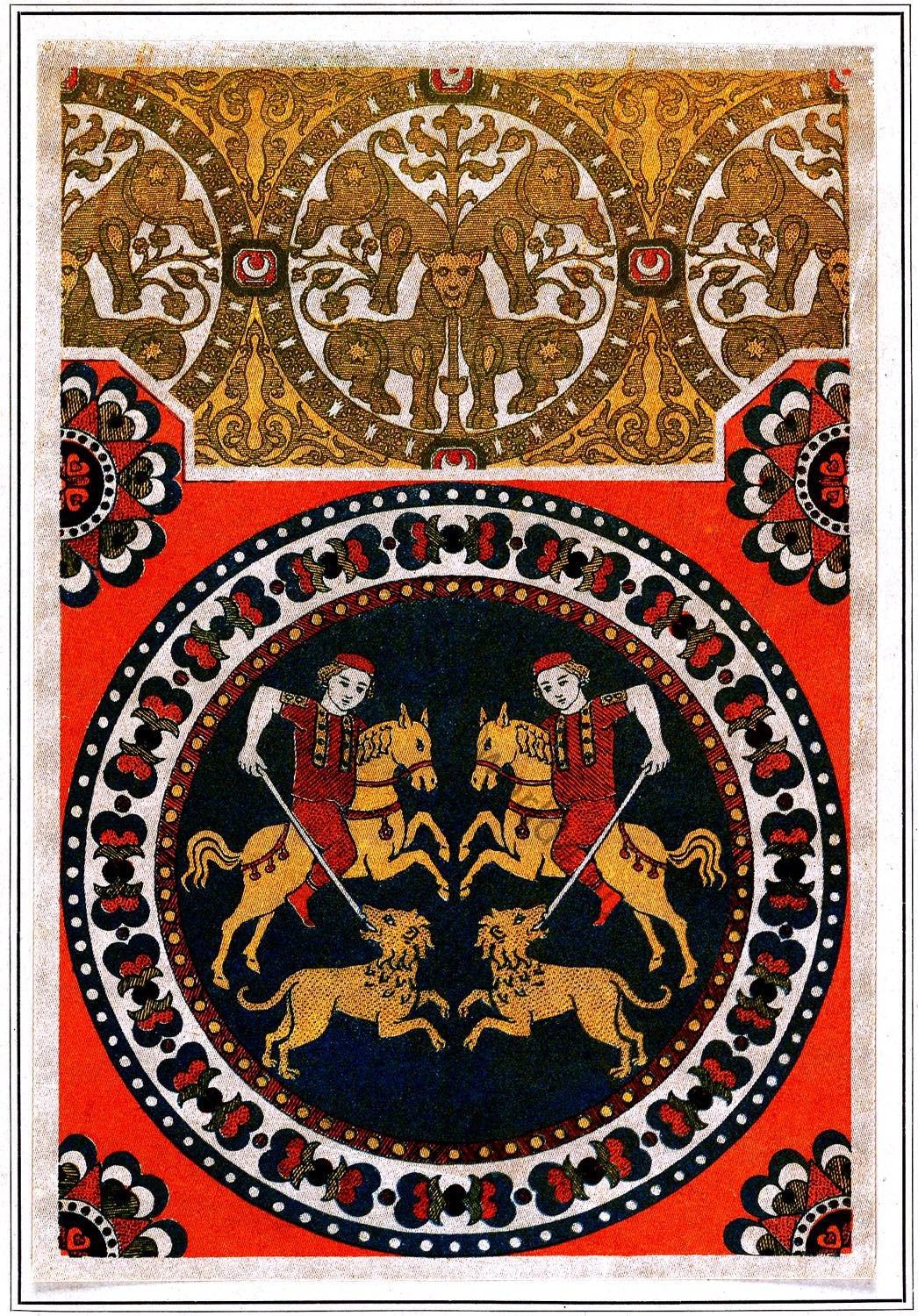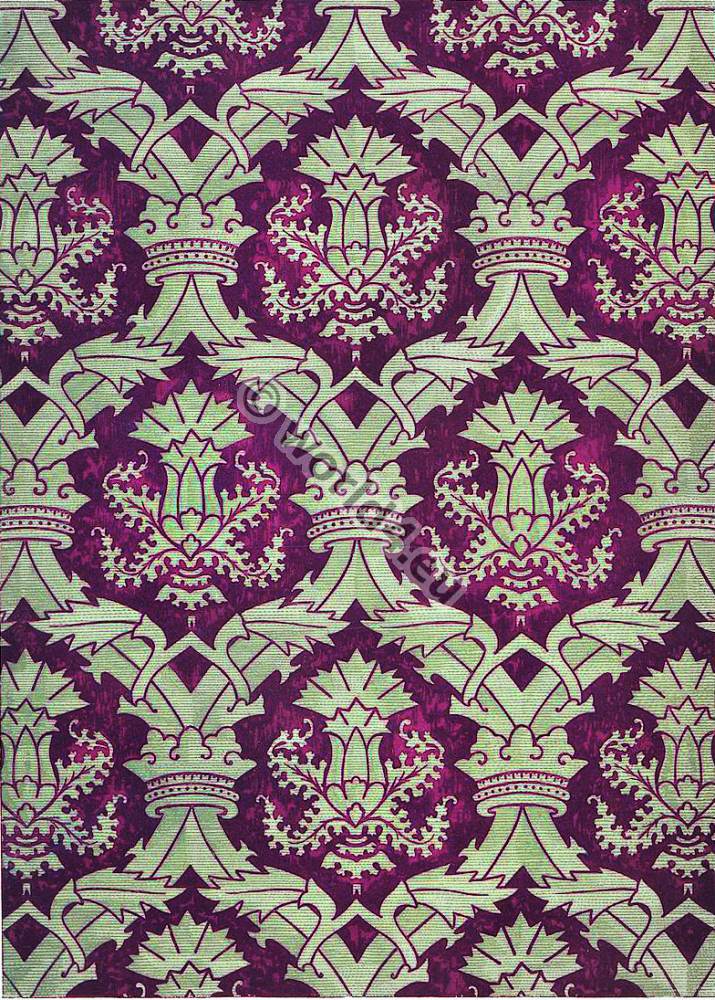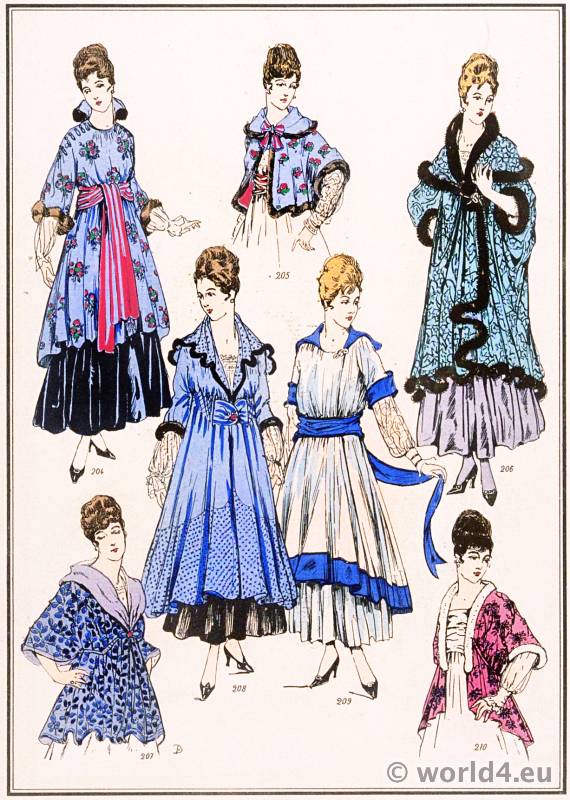
French Silks hanging patterns. 18th century fabrics.
The silks, the designs for which form the subject of our plate, all come from that branch of French manufacture to which Golbert, under Louis XIV, gave so powerful an impulse, and the productions of which, thanks to careful academical studies, and the wholesome traditions of the studios, have never ceased to influence all title European manufactories engaged in the production of these fabrics.
The twelve examples given in title accompanying plate may be classified in the following order. To this classification we have added a scale showing the relative proportion of each to the original (the patterns are shown reduced from their original size).
1. Hangings for furniture and walls. — State robes – Fig. 1 to 6,
2. Idem, in two colors (Louis XVI) – Fig. 7 – 10,
3. Light silks (Louis XVI) – Fig. 10 – 11,
4. Border (Louis XVI) – Fig. 12, In the first four of these, traces of the influence of Asiatic art on the national taste may be observed. Numbers 3 and 4 deserve special attention from the manner in which by means of reflected rays richness and fulness are imparted to the primary simple designs. Lastly, as a peculiarity in the process of manufacture, we notice in Numbers 2, 3, 4, 10, 11, the use of silks figured with zonal patterns.
Source: Polychromatic ornament by Auguste Racinet. London, H. Sotheran and Co., 1877.
Related
Discover more from World4 Costume Culture History
Subscribe to get the latest posts sent to your email.






